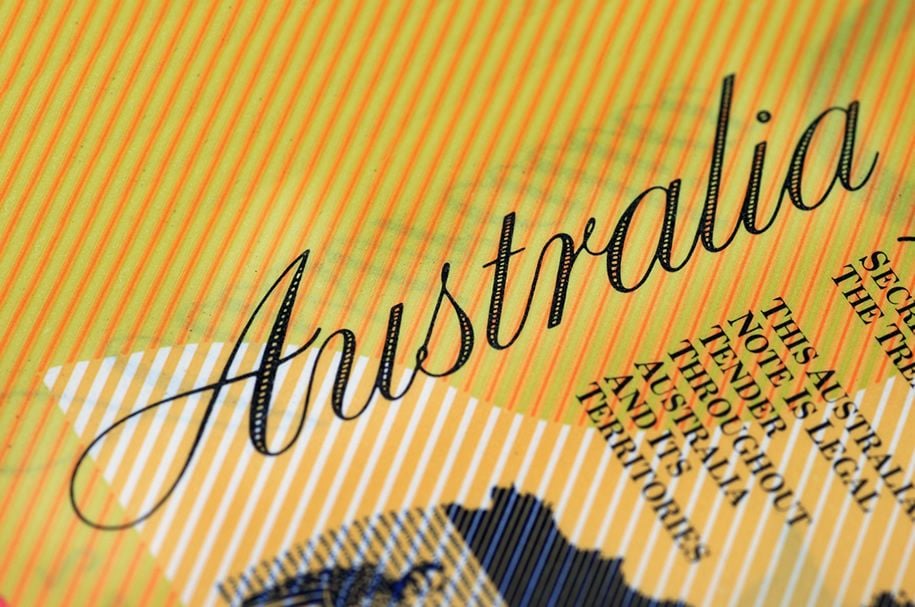Sell the Australian Dollar say these Strategists
- Written by: James Skinner

The Australian Dollar could see downward pressure against its main competitors in the months ahead argue strategists eyeing the economy and central bank policy.
The Australian Dollar could come under increasing pressure during the months ahead, according to strategists, as the consumer wilts under the weight of record debt levels and renewed falls in commodity prices add further to the economy’s woes.
Selling the Australian Dollar short against the greenback is one idea that could makes speculators money in this environment, according to the foreign exchange strategy team at Morgan Stanley.
“Weak Australian retail sales have added to our view that the economy is about to enter a weaker period. At the same time, investors in USD assets have underpriced the potential for tax reform in our view,” says Hans Redeker, a strategist with the US investment bank.
Australian retail sales fell by -0.6% for the month of August, according to Australian Bureau of Statistics (ABS) figures, when economists had forecast them to rise by 0.3%.
This made for the worst monthly sales number from Australia since March 2013 and, when combined with a downward revision to July’s number, the two month change in Australian retail sales was the worst since October 2010.
“The markets currently expect the RBA to hike rates once in the next 12 months and again by mid 2019. We think that rates pricing will reduce as economic data continue to underperform,” says Redeker. “The AUD remains vulnerable to the recent fall in iron ore prices, weaker data from China and higher rates in general.”
Iron ore futures prices have fallen by more than 25% since the end of August as state mandate closures of some Chinese steel mills hit expectations for demand. Iron ore is Australia’s largest export and China the nation’s largest customer.
It's not just iron ore that could be problematic.
“Gold matters to Australia - it's the world's second largest producer – but then, so do most commodities because they are the country's lifeblood,” says Neil Mellor, senior currency strategist at BNY Mellon. “Australia is the world's largest producer of iron ore, the fourth largest producer of coal and so on.”
Mellor notes a 74% correlation between the AUD/USD pair and the Thomson Reuters Jefferies commodity price index that dates back to the year 2000. He also flags that AUD/USD has been testing a key technical support level at or around 0.7772 - it broke through this level in London Monday.
“Whether these levels will hold remains to be seen, but if they do not, then with CME data still showing a net long non-commercial position of 77k contracts for the currency – the highest since early 2013 – there is clearly the potential for a move of fairly significant proportions,” Mellor wrote in a recent note.
Also betting on a fall in the Aussie Dolalr is Deutsche Bank strategist Robin Winkler who is targeting a fall in AUD/USD to 0.75 from 0.7757.
"Rates pricing for the RBA remains too hawkish, in our view, with 40bps of tightening baked into the curve for next year. Our economists expect the RBA to remain on hold throughout 2018, and we think their neutral tone at last week's meeting pointed to increasing discomfort with market pricing holding the AUD at overvalued levels," says Winkler in a note published October 9.
Morgan Stanley strategists have been recommending clients sell AUD/USD short since late September after entering their trade at the 0.7856 level.
They recommend a stop loss of 0.7960 and are targeting a break below the support level Mellor flags, with a further downward move to the 0.7500 area.
But it’s not just the AUD/USD pair that could be vulnerable. The Aussie currency could face pressure across the G10 basket during the coming months as central banks in Europe and the US push ahead with policy normalisation.
“A dark cloud of uncertainty now hangs over the economy, blackened by yesterday's weak retail sales report, which precludes any serious attempt at shrinking a teetering debt mountain,” says Mellor.
The Reserve Bank of Australia has now left interest rates unchanged at a record low of 1.5% for the last 14 months, while policymakers have repeatedly flagged the need to consider the impact that rising rates could have on a debt laden consumer in an environment of muted wage growth.
So the European Central Bank’s move to unwind its quantitative easing program, mounting expectations the Bank of England will soon withdraw stimulus and a steady push by the Federal Reserve to drive US rates higher all mean that fundamentals favour Sterling, the US Dollar and the Euro over the Aussie at present.
“When the USD trends higher, the reciprocal weakness of commodity currencies is typically reinforced by falling raw material prices. The latter (for the most part) have been holding up; but the pressure is on, and the AUD for one looks to be in trouble,” Mellor adds.
The Australian Dollar has shed 3.7% against the US Dollar during the last month to trade at 0.7751 Monday morning.
It has fallen by 3.2% against the Pound during the same time period, making for a Pound-to-Australian-Dollar rate of 1.6913 on Monday. Against the Euro, the Aussie has dropped around 1.46% during the last week making for a EUR/AUD exchange rate of 1.5139.
Get up to 5% more foreign exchange by using a specialist provider by getting closer to the real market rate and avoid the gaping spreads charged by your bank for international payments. Learn more here.




